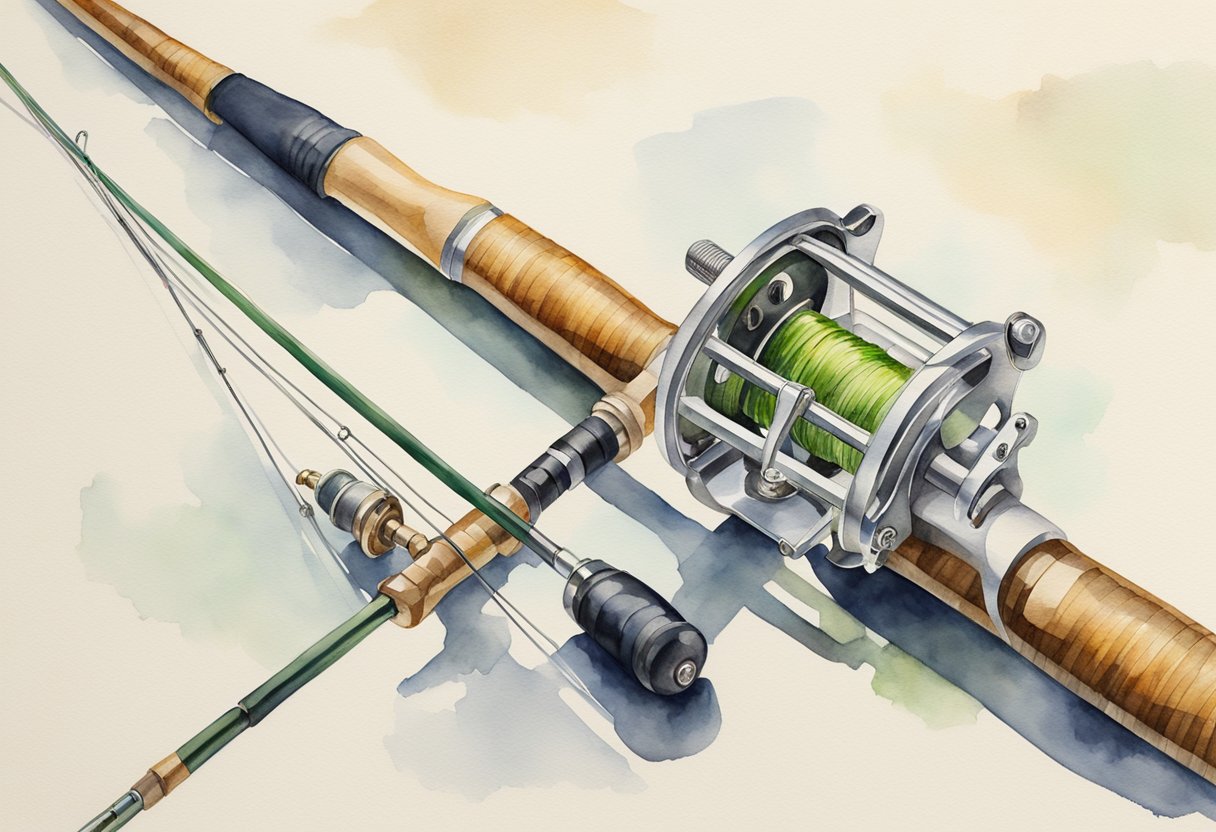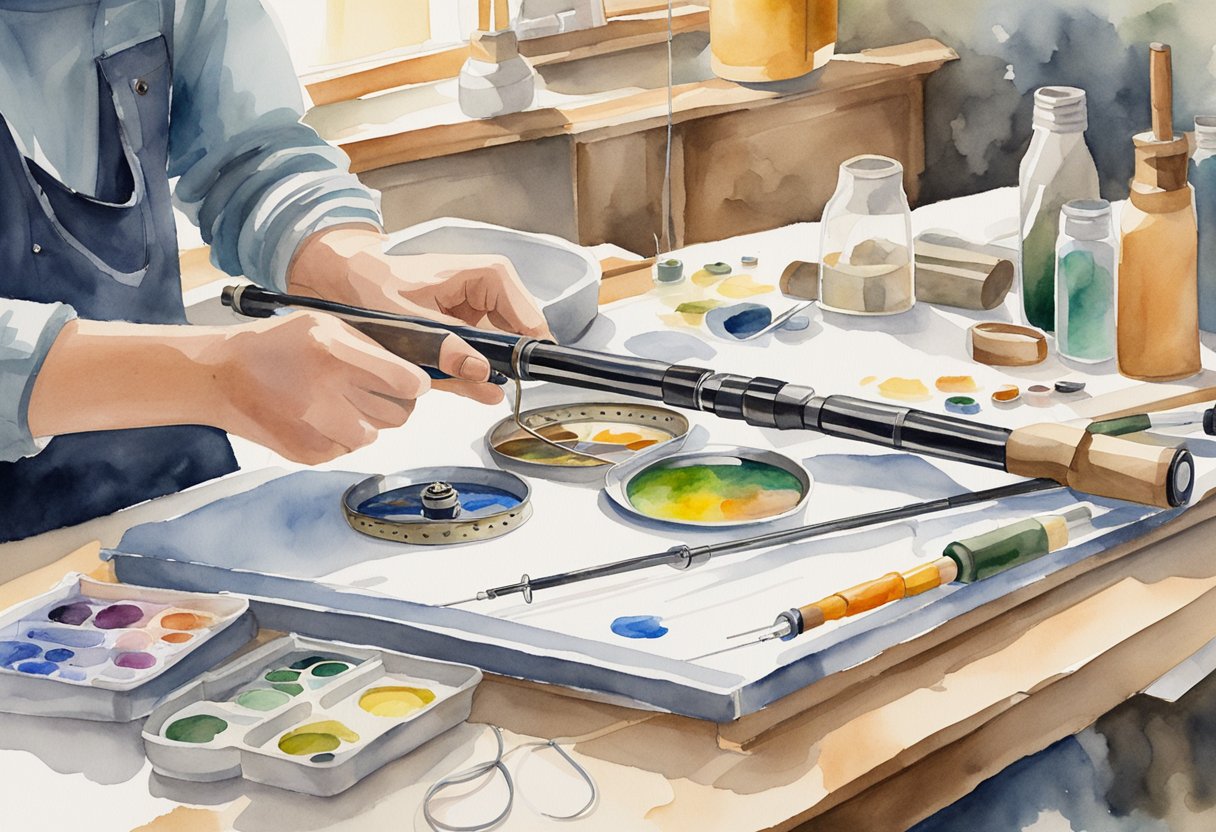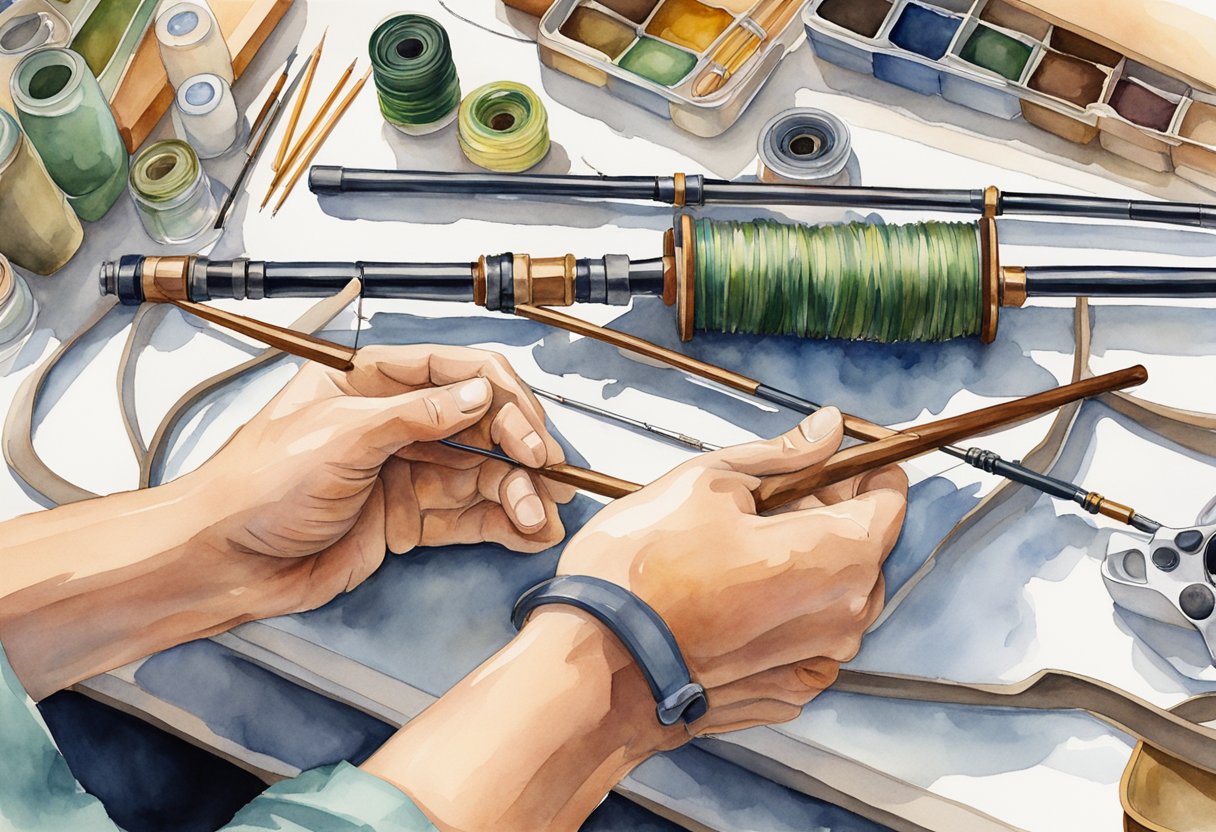Fly fishing is a popular sport that requires patience, skill, and the right equipment. One of the most important pieces of equipment for fly fishing is the fly fishing rod. Setting up a fly fishing rod can be a bit intimidating for beginners, but with the right guidance, it can be done easily and quickly.

To set up a fly fishing rod, one must first choose the right equipment. This includes an appropriately weighted rod, reel, backing, fly line, leader, and tippet material. It is important to choose gear that is appropriate for the type of fish you plan on catching. Once you have the right gear, setting up your fly fishing rod is a matter of following a few simple steps.
Key Takeaways
- Choosing the right equipment is crucial for setting up a fly fishing rod.
- Setting up a fly fishing rod involves following a few simple steps.
- Patience and practice are key to becoming proficient in fly fishing.
Choosing the Right Equipment

When it comes to fly fishing, selecting the right equipment is crucial. Here are the key factors to consider when choosing the right gear for your fly fishing rod setup:
Selecting the Fly Rod
Choosing the right fly rod is essential for a successful fly fishing experience. Factors to consider include the rod weight, action, and size. A medium action rod is a good choice for beginners, as it provides a balance between sensitivity and power. The rod weight should be appropriate for the species of fish you are targeting. Additionally, the size of the rod should be based on the type of water you will be fishing in.
Understanding the Fly Reel
The fly reel is an essential component of your fly fishing setup. When selecting a reel, it is important to consider factors such as the reel seat, anodized finish, and line capacity. A good reel should have a strong drag system that can handle the weight of the fish you are targeting.
Deciding on the Fly Line
The fly line is another important factor to consider when setting up your fly fishing rod. Different types of fly lines are available, including floating lines, sinking lines, weight forward lines, and double taper lines. The type of line you choose should be based on the type of fishing you plan to do.
Assessing the Leader and Tippet
The leader and tippet are the final components of your fly fishing setup. The leader should be tapered to provide a smooth transition between the fly line and the fly. The tippet material should be strong enough to handle the weight of the fish you are targeting.
Choosing the Right Flies
Selecting the right flies for your fly fishing setup is essential for success. Different types of fishing flies are available, including dry flies, nymphs, and streamers. The type of fly you choose should be based on the type of fish you are targeting and the conditions you will be fishing in.
Additional Gear
Other essential gear for your fly fishing setup includes clippers, fly boxes, nail knot tools, and nail clippers. Scissors are also useful for cutting tippet material.
Species-Specific Considerations
When setting up your fly fishing rod, it is important to consider the species of fish you will be targeting. Different species of fish require different types of flies and gear. For example, trout fishing requires a different setup than saltwater fishing for tarpon.
Setting Up Your Fly Fishing Rod

Assembling the Fly Rod
Before setting up your fly fishing rod, ensure that you have all the necessary components – a fly rod, a fly reel, a fly line, a backing line, a leader, a tippet, and a fly. Start by assembling the fly rod. The butt section is the end that you hold in your hand, and it’s where the reel is attached. Insert the end of the butt section into the next largest section with the alignment dots 180 degrees apart, then twist. Repeat this step for the remaining sections until the rod is fully assembled.
Attaching the Reel
Attach the fly reel to the reel seat on the rod. Ensure that the reel seat is tight enough to hold the reel in place, but not so tight that it damages the rod. The reel should be attached with the handle facing the angler and the spool facing away from the angler. Ensure that the reel is balanced on the rod, and adjust the position of the reel on the reel seat if necessary.
Stringing the Line
Wind the backing line onto the spool of the reel, then attach the fly line to the backing line using a nail knot or an albright knot. Use a nail knot tool to tie the knot tightly. Once the fly line is attached to the backing line, wind the fly line onto the spool of the reel. Ensure that the line is wound evenly and tightly.
Tying the Leader and Tippet
Attach the tapered leader to the end of the fly line using a loop-to-loop connection or a nail knot. Tie the tippet to the end of the leader using a blood knot or a surgeon’s knot. The tippet should be of a similar diameter to the fly line and leader. The length of the leader and tippet should be determined by the type of fishing you plan to do and the size of the fish you are targeting.
Selecting and Attaching the Fly
Select a fly that matches the type of fish you are targeting and the conditions you are fishing in. Tie the fly to the end of the tippet using a clinch knot or an improved clinch knot. Ensure that the knot is tight and secure.
Casting Techniques
To cast the fly, hold the rod with both hands, with the reel facing downwards. Use a double haul or a single haul casting technique to propel the fly forward. Ensure that the fly lands gently on the water to avoid spooking the fish. Use an indicator or a strike indicator to detect when a fish takes the fly.
Catching Fish
To catch fish, use a variety of techniques, including stripping, doubling, and retrieving. Vary the speed and depth of the fly to entice the fish to bite. Be patient and persistent, and keep practicing your casting technique to improve your chances of success. Fish for a variety of species, including trout, bass, steelhead, panfish, salmon, tarpon, and saltwater fish.
By following these steps, you can set up your fly fishing rod and enjoy a successful day on the water.
Frequently Asked Questions
What is the best fly fishing setup for beginners?
For beginners, a 9-foot rod with a weight of 5 or 6 is a good all-around choice. A medium-action rod is also recommended as it provides a good balance of sensitivity and ease of use. A reel with a good drag system is also important, as it can help to tire out fish and prevent them from breaking the line.
How do you set up a fly fishing rod and reel?
To set up a fly fishing rod and reel, start by assembling the rod and attaching the reel to the rod. Next, attach the backing to the reel and then attach the fly line to the backing. Finally, attach the leader to the fly line and tie on a fly.
Should I set up my fly fishing reel left or right-handed?
The answer to this question depends on personal preference. Most reels can be set up for either left or right-handed use. It is recommended to set up the reel in the way that feels most comfortable to the angler.
What is fly line backing and how do I use it?
Fly line backing is a thin, strong line that is attached to the reel before the fly line. It serves as a reserve line in case a fish takes out all of the fly line. To use it, attach the backing to the reel using a strong knot, such as an arbor knot.
How do you tie a fly onto a fly rod?
To tie a fly onto a fly rod, start by attaching the leader to the fly line using a loop-to-loop connection. Next, tie a fly onto the tippet using a knot such as the improved clinch knot or the palomar knot.
What is a fly fishing leader and how do I rig it for trout?
A fly fishing leader is a tapered line that is attached to the end of the fly line. It is used to present the fly to the fish in a natural manner. To rig it for trout, start by attaching the leader to the fly line using a loop-to-loop connection. Next, tie on a tippet using a knot such as the blood knot or the surgeon’s knot. Finally, tie on a fly using a knot such as the improved clinch knot or the palomar knot.